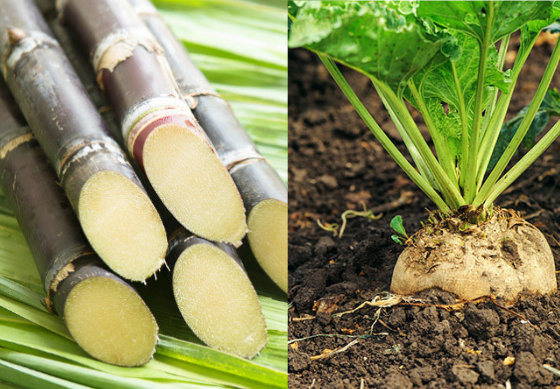Examining beet sugar vs cane sugar reveals distinctions in production costs and distribution.
Examining beet sugar vs cane sugar reveals distinctions in production costs and distribution.
Blog Article
Discover the Uses and Perks of Beet Sugar Vs Cane Sugar in Your Daily Diet Plan
Exploring the distinct qualities of beet and cane sugar discloses greater than just their sweetening capabilities; it highlights their one-of-a-kind effect on health and cookeries. Beet sugar, known for its subtle taste, is typically preferred in delicate treats, whereas cane sugar, with its tip of molasses, adds richness to durable dishes. Each kind holds its own dietary account and glycemic implications, welcoming a deeper understanding of their duties in a balanced diet regimen and sustainable intake techniques.
Origin and Manufacturing Processes of Beet and Cane Sugar

The distinctive environments and soil kinds required for growing sugar beetroots and sugarcane add to differences in their cultivation methods and geographical circulation, affecting the economics and sustainability of their production. beet sugar vs cane sugar.
Nutritional Comparison Between Beet Sugar and Cane Sugar
Regardless of stemming from different plants, beet sugar and cane sugar are nutritionally very similar, both mainly being composed of sucrose. Each gives concerning 4 calories per gram, translating to roughly 16 calories per teaspoon. Structurally, both sugars are composed of roughly 99.95% sucrose, with very little quantities of other compounds like wetness and trace element, which do not significantly alter their nutritional accounts.
Inevitably, when choosing between beet sugar and cane sugar based on nutritional content alone, both offer similar benefits and disadvantages as they are basically types of the exact same particle-- sucrose, supplying fast power without various other nutrients.
Effect On Health And Wellness: Glycemic Index and Caloric Content
Checking out further into the results of beet sugar and cane sugar on health and wellness, it is essential to consider their glycemic index and calorie material. Both sugars are classified as sucrose, which includes sugar and fructose. This make-up leads them to have a comparable effect on blood glucose levels. The glycemic index (GI) of both beet and cane sugar is around 65, categorizing them as high-GI foods, which can create go to my blog fast spikes in blood sugar levels. This is a critical facet for individuals managing diabetes mellitus or those attempting to support their power degrees throughout the day.
Each sort of sugar consists of about 4 calories per gram, making their calorie content matching. For those keeping an eye on caloric consumption, specifically when handling weight or metabolic health problems, understanding this equivalence is company website crucial (beet sugar vs cane sugar). Extreme intake of any high-calorie, high-GI food can contribute to wellness issues such as weight problems, heart disease, and insulin resistance.
Environmental and Economic Factors To Consider of Sugar Production
Beyond health and wellness impacts, the production of beet and cane sugar additionally increases significant environmental and financial concerns. Sugar beet growing often tends to require cooler climates and has a reduced geographical impact compared to sugar cane, which prospers in exotic regions. Both crops are intensive in terms of water use and land occupation, potentially leading to deforestation and water deficiency. Financially, the global sugar market is highly unstable, affected by adjustments in international trade policies and subsidies. Several countries incentivize sugar production with financial backing, skewing market prices and impacting small farmers adversely.
Furthermore, using pesticides and fertilizers in both beet and cane sugar growing can result in soil degradation and pollution, additional affecting biodiversity and regional water bodies (beet sugar vs cane sugar). The choice between growing sugar beet or cane frequently rests on regional environmental conditions and economic factors, making the sustainability of sugar production an intricate concern
Culinary Applications and Taste Differences
While the environmental and economic elements of sugar production are without a doubt substantial, the selection in between beet and cane visit our website sugar likewise influences culinary applications and taste profiles. Beet sugar, derived from the sugar beet plant, is recognized for its extremely neutral taste.
Walking cane sugar, extracted from sugarcane, frequently preserves molasses traces, which impart an unique splendor and depth. The small variant in moisture material in between beet and cane sugar can influence the appearance and consistency of meals, making cane sugar a recommended selection for details recipes that benefit from its one-of-a-kind homes.

Conclusion
To conclude, both beet and cane sugar have unique beginnings and production procedures, offering similar nutritional accounts with minor distinctions in salt content and flavor. While their effect on health, particularly regarding glycemic index and calories, is comparable, the selection in between them commonly comes down to environmental, economic factors, and specific cooking demands. Recognizing these elements can direct customers in making educated decisions that straighten with their health and wellness goals and taste choices.
Report this page